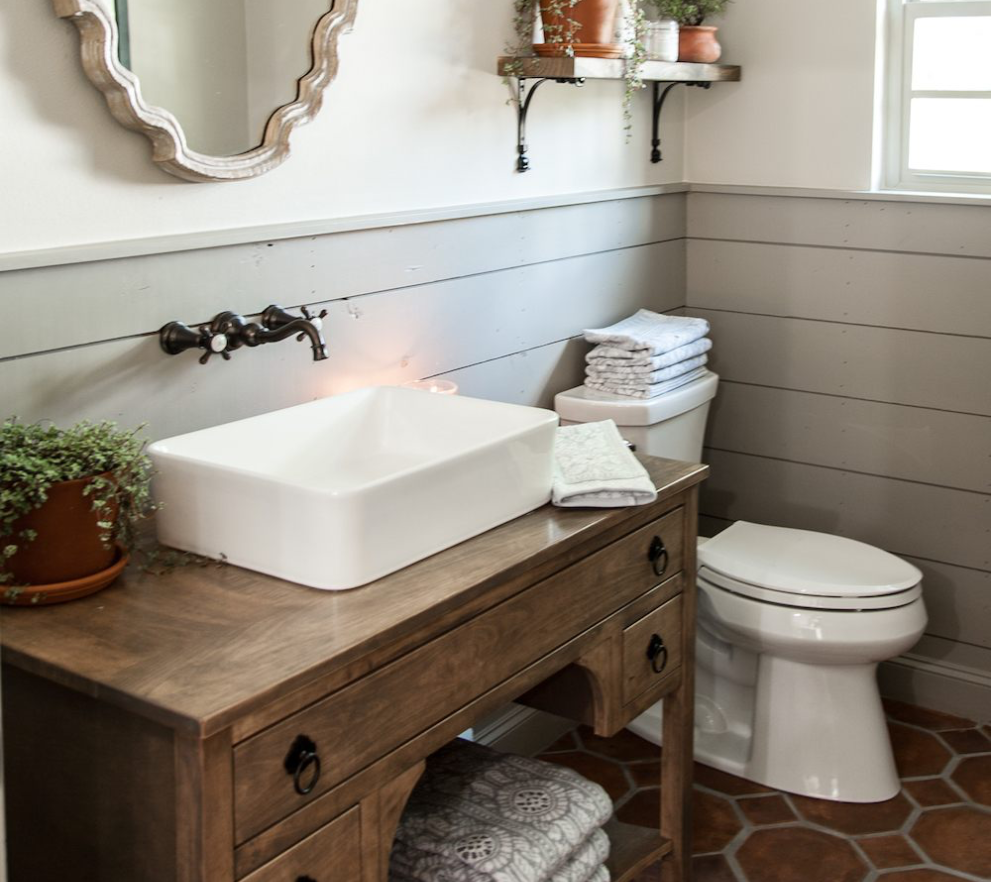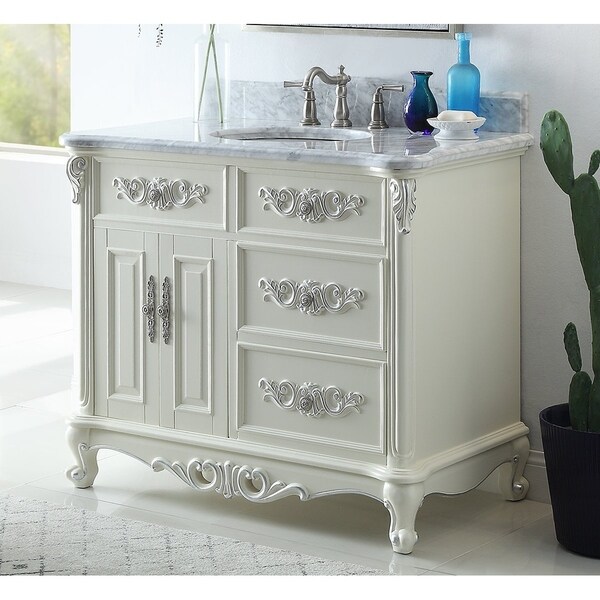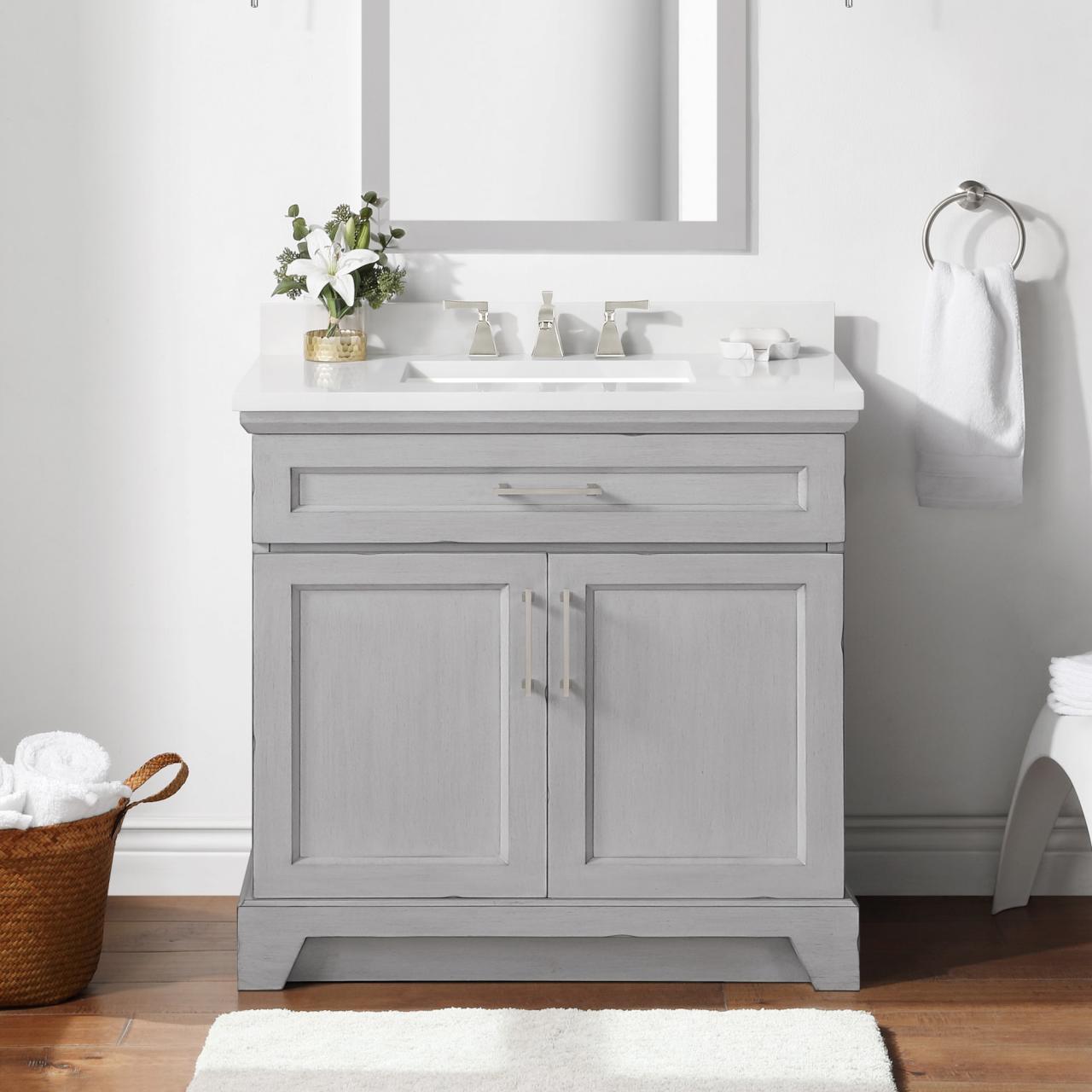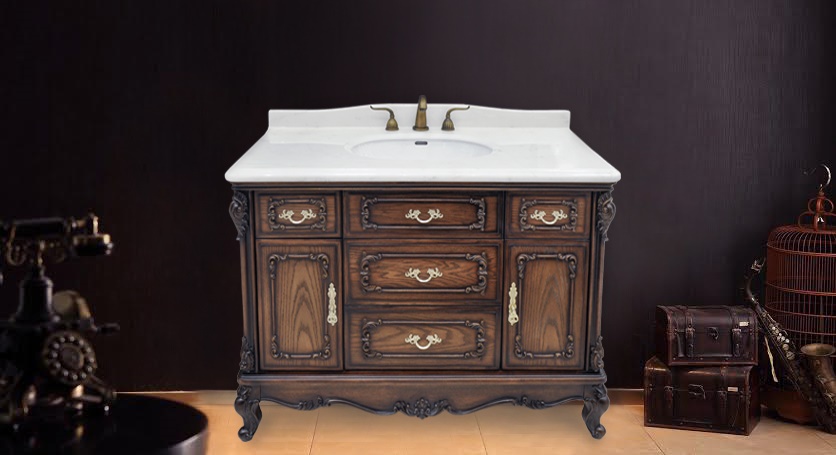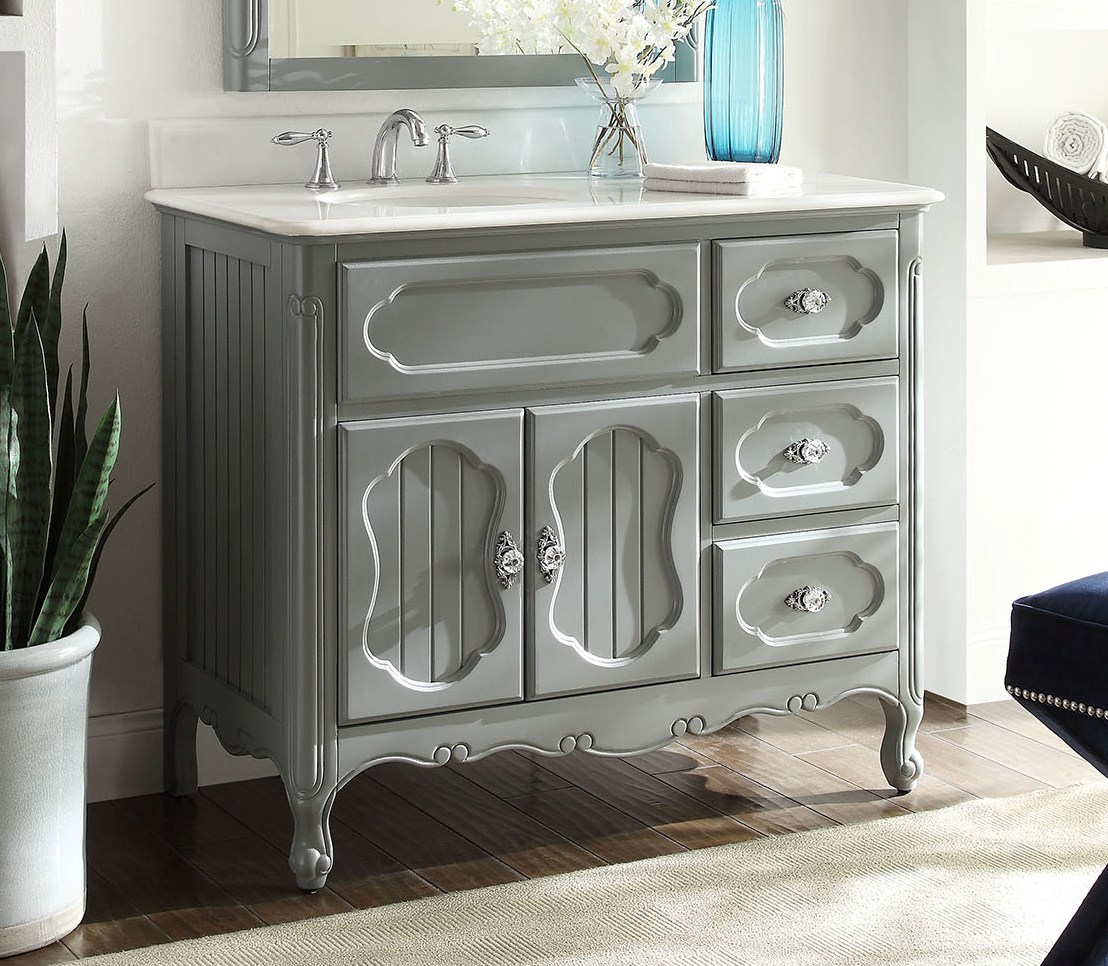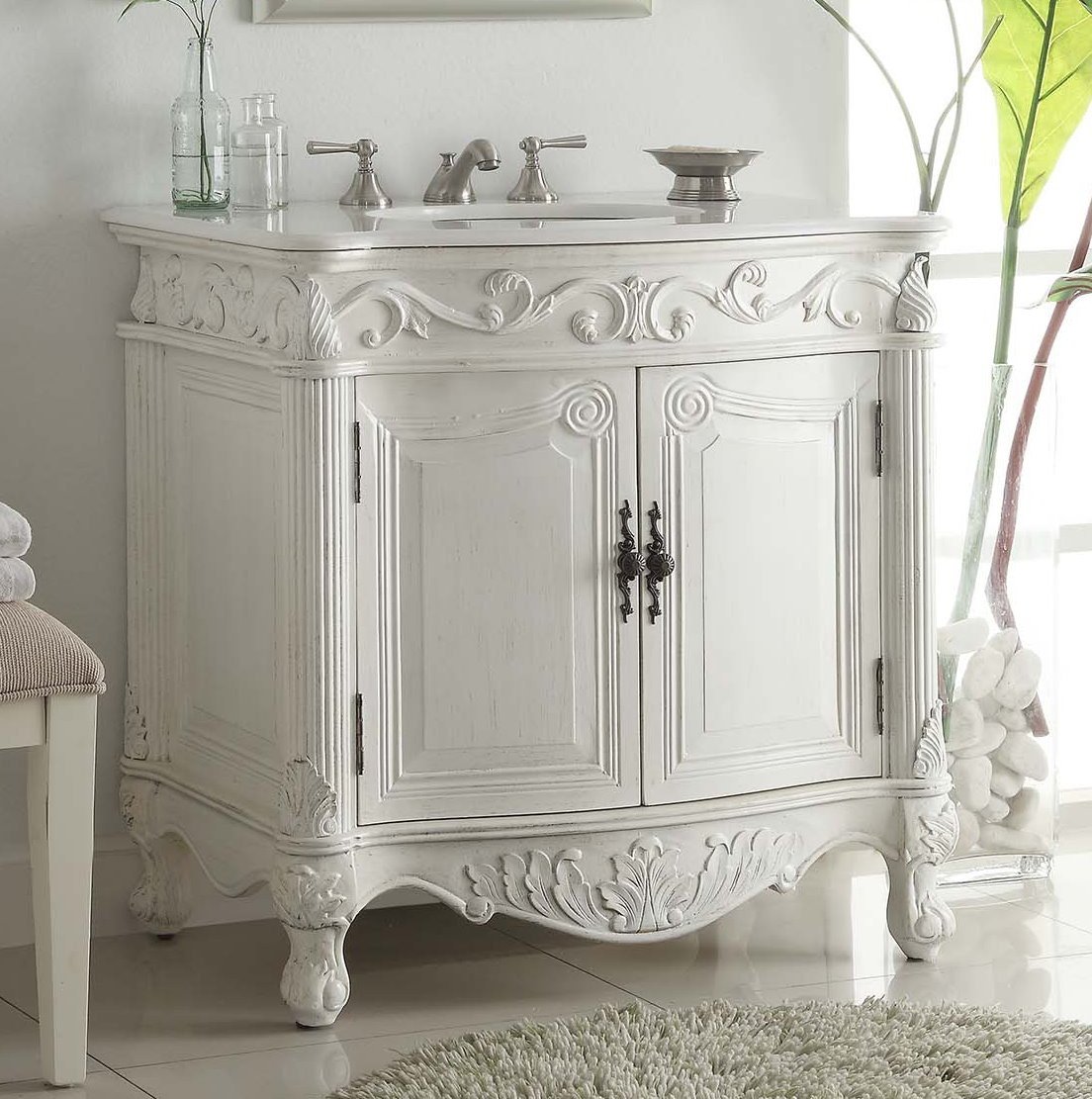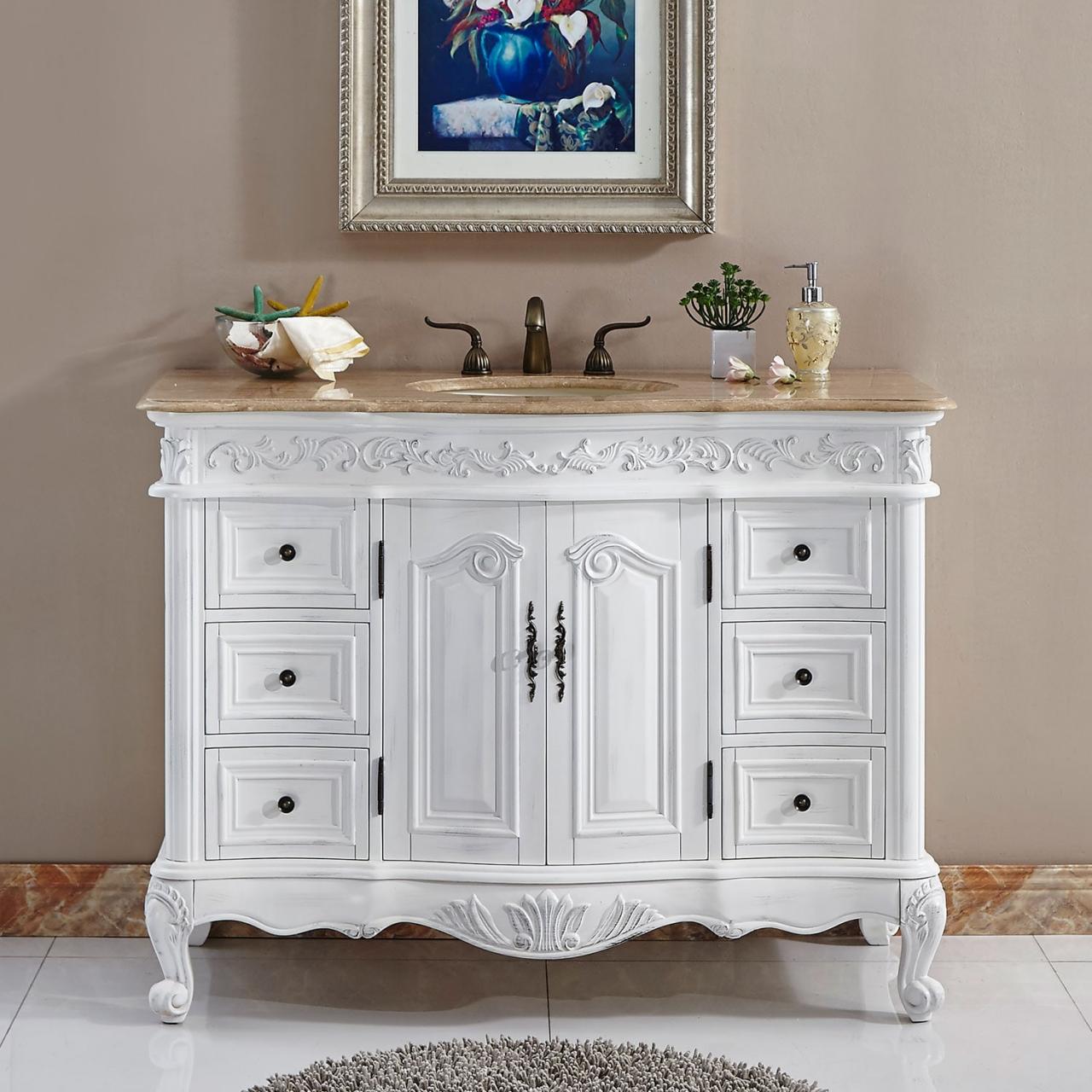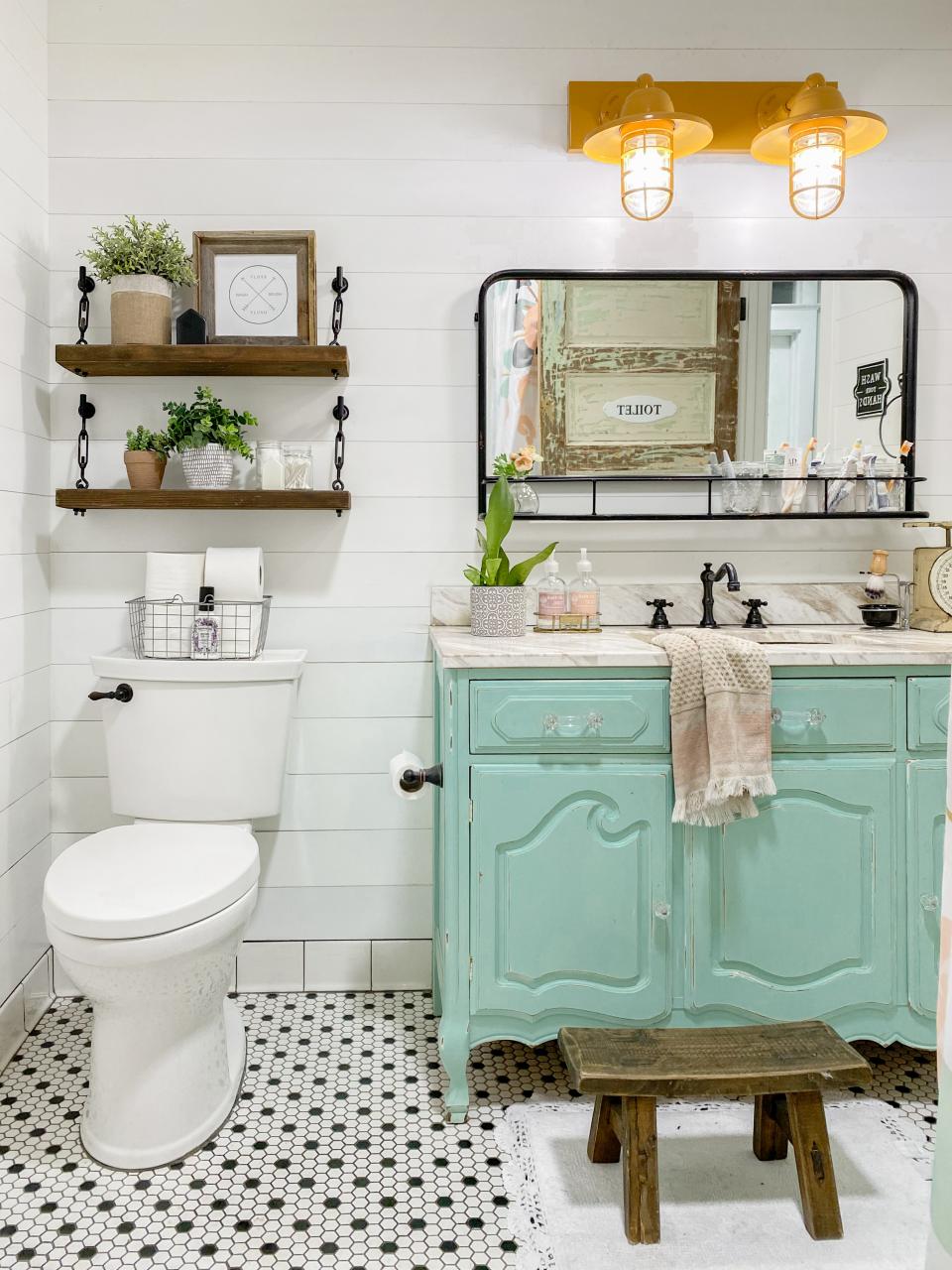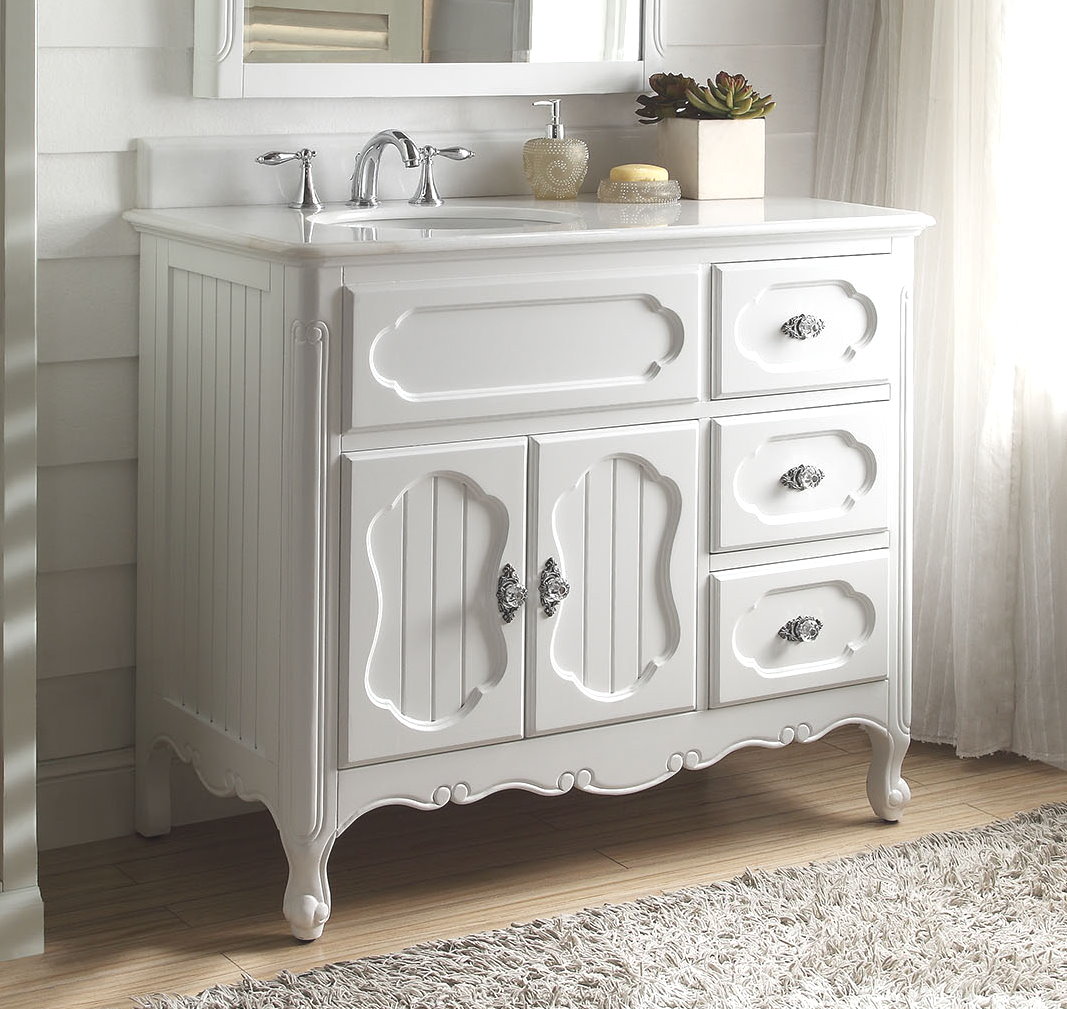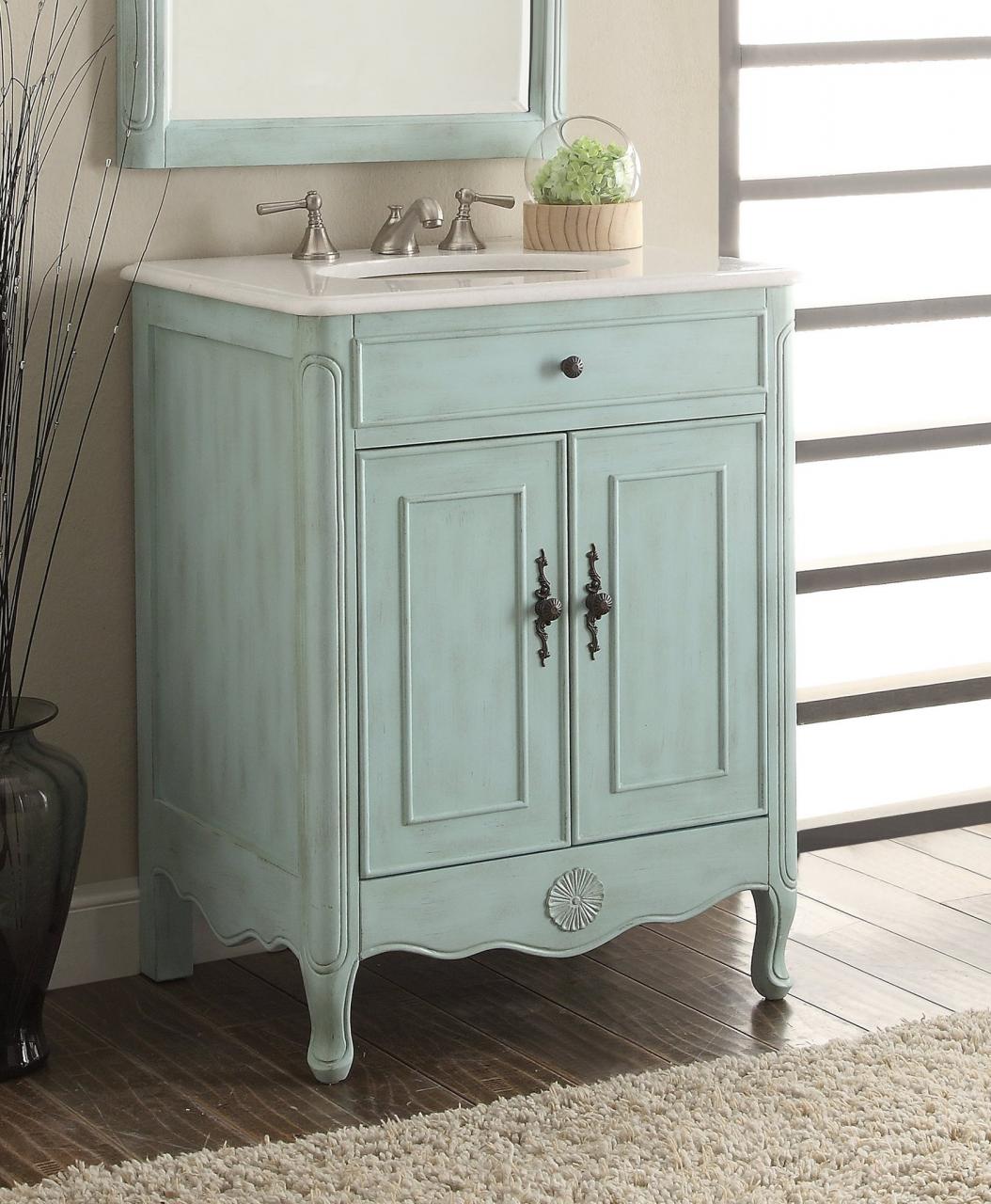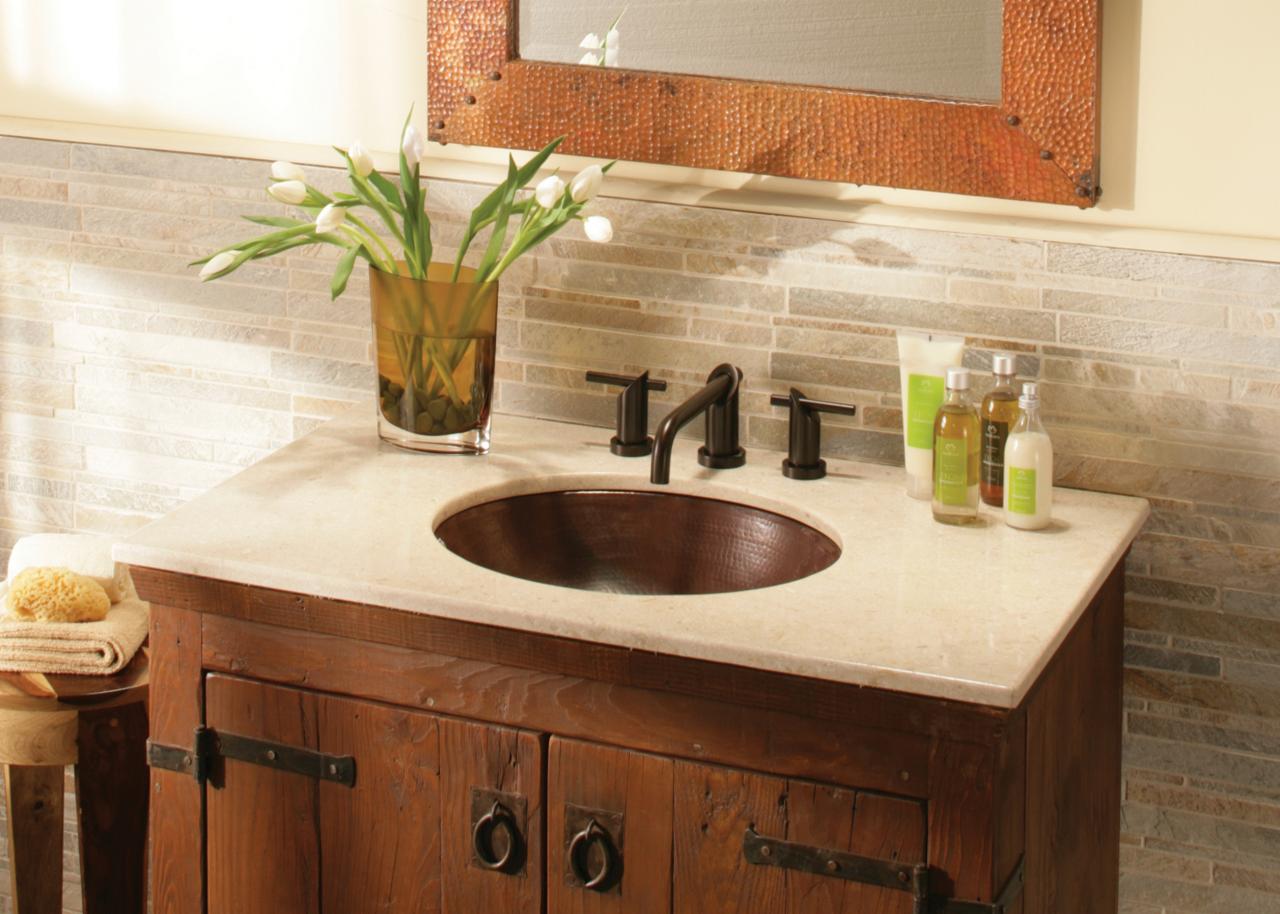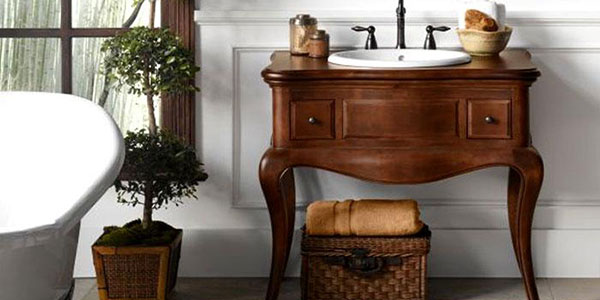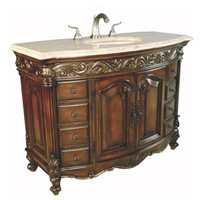Vintage Bathroom Vanities: A Timeless Choice
Vintage bathroom vanities have gained popularity as a stylish and functional addition to homes, blending old-world charm with modern convenience. These pieces often become the centerpiece of a bathroom, adding a unique touch that stands out from standard contemporary designs. But what exactly makes vintage bathroom vanities a timeless choice?
- Historical Appeal: Vintage bathroom vanities are steeped in history. They often reflect the craftsmanship and design aesthetics of bygone eras, making them not just functional pieces but also historical artifacts. Their presence can evoke a sense of nostalgia and timeless elegance that modern vanities might lack.
- Unique Designs: Unlike mass-produced contemporary vanities, vintage pieces are often one-of-a-kind. They come in a variety of styles, from the ornate carvings of the Victorian era to the sleek lines of mid-century modern design. This uniqueness allows homeowners to express their style in a way that feels both authentic and distinctive.
- Quality Craftsmanship: Vintage vanities were typically built to last. Made from high-quality materials and with meticulous attention to detail, these pieces can endure for decades if not centuries. This durability makes them a worthwhile investment, as they can withstand the test of time both in terms of style and functionality.
- Sustainability: Choosing a vintage vanity is also an environmentally friendly decision. By reusing and repurposing older furniture, homeowners can reduce waste and the demand for new materials. This sustainable choice helps preserve resources and minimize the environmental impact associated with producing new furniture.
- Customization Potential: Vintage vanities often provide a great base for customization. Whether it’s refinishing the wood, updating the hardware, or adding a modern sink, these pieces can be adapted to fit contemporary needs while retaining their classic charm. This flexibility makes them suitable for a variety of bathroom designs.
- Investment Value: As vintage items, well-preserved bathroom vanities can increase in value over time. Collectors and enthusiasts often seek out specific styles and brands, making these pieces not just functional but also a potential financial investment. Proper care and maintenance can ensure that a vintage vanity remains a valuable asset.
Key Features of Vintage Bathroom Vanities
Understanding the key features of vintage bathroom vanities is essential for identifying authentic pieces and appreciating their unique characteristics. These features often define the charm and appeal of vintage vanities, setting them apart from modern alternatives.
Ornate Detailing: One of the hallmarks of vintage bathroom vanities is their ornate detailing. This can include intricate wood carvings, decorative moldings, and elaborate drawer pulls. Such details add a sense of elegance and craftsmanship that is rarely found in contemporary designs.
Rich Materials: Vintage vanities are often made from high-quality, solid wood like oak, mahogany, or walnut. These materials not only ensure durability but also contribute to the rich, warm aesthetic that vintage furniture is known for. The natural grain and texture of these woods add depth and character to each piece.
Period-Specific Hardware: The hardware on vintage vanities is typically reflective of the era in which they were made. This can include brass or bronze handles, knobs, and hinges, often with detailed engravings or unique shapes. The hardware can be a significant indicator of the vanity’s age and origin.
Classic Lines and Shapes: The shape and structure of vintage vanities often differ significantly from modern designs. You might find curved legs, beveled edges, and unique silhouettes that hark back to specific periods, such as the elegant curves of Victorian pieces or the clean, geometric lines of Art Deco styles.
Handcrafted Construction: Unlike mass-produced modern furniture, vintage vanities were often handcrafted. This means that each piece is unique, with slight variations and imperfections that add to its charm. The handcrafted nature also implies a level of craftsmanship and attention to detail that is highly valued.
Patina and Wear: Authentic vintage vanities will often show signs of age, such as a patina on the wood, minor scratches, or wear on the hardware. These marks of time add character and authenticity, distinguishing true vintage pieces from modern reproductions. The aged look is part of what makes these vanities so appealing.
Materials and Finishes: What Makes a Vanity Vintage?
The materials and finishes used in vintage bathroom vanities are integral to their charm and longevity. Understanding these elements can help in identifying genuine vintage pieces and appreciating their unique qualities.
Solid Wood: Most vintage vanities are made from solid wood, a hallmark of quality and durability. Woods like oak, mahogany, walnut, and cherry are commonly used, each bringing its unique grain pattern and color. Solid wood construction ensures that these vanities can withstand the test of time, often looking better as they age.
Marble and Stone Tops: Many vintage vanities feature marble or stone tops, adding a touch of luxury and sophistication. Marble, with its unique veining and elegant appearance, is particularly popular. These materials not only enhance the vanity’s aesthetic appeal but also provide a durable and easy-to-clean surface.
Natural Finishes: Vintage vanities often boast natural finishes that highlight the beauty of the wood. These finishes can range from oil and wax treatments that bring out the wood’s natural luster to traditional shellac or varnish that provide a protective and glossy coating. The finish can significantly affect the vanity’s appearance and how it ages.
Handcrafted Details: The handcrafted nature of vintage vanities often means that the details and finishes are unique. Hand-applied stains, carvings, and joinery techniques add to the vanity’s character. These details are usually absent in mass-produced modern furniture, making vintage pieces stand out.
Antique Hardware: The hardware on vintage vanities is often made from materials like brass, bronze, or iron. These metals develop a beautiful patina over time, adding to the vanity’s antique appeal. The design of the hardware, whether it’s ornate or simple, can also provide clues about the vanity’s era and origin.
Aged Patina: One of the most distinctive features of vintage vanities is their aged patina. This natural aging process gives the wood a rich, warm color and a unique texture that cannot be replicated in new furniture. The patina adds depth and character, making each piece truly one-of-a-kind.
Incorporating Vintage Vanities into Modern Bathrooms
Blending vintage vanities into modern bathrooms can create a stunning and harmonious look that combines the best of both worlds. Here are some tips and ideas on how to seamlessly incorporate these timeless pieces into contemporary settings.
Mix and Match Styles: Don’t be afraid to mix different design styles. A vintage vanity can serve as a striking focal point in a modern bathroom. Pair it with sleek, minimalist fixtures and fittings to create a balanced look. The juxtaposition of old and new can result in a unique and visually appealing space.
Neutral Color Palettes: Use a neutral color palette to create a cohesive look. Whites, grays, and beiges can help blend the vintage vanity with modern elements. This approach allows the vanity to stand out without clashing with other design features. Additionally, neutral colors can make the bathroom feel more spacious and serene.
Modern Fixtures and Fittings: Updating the fixtures and fittings around the vintage vanity can help integrate it into a modern bathroom. Consider installing a contemporary sink, faucet, and mirror. Modern lighting can also enhance the overall aesthetic while providing necessary illumination for daily tasks.
Functional Updates: While preserving the vintage charm, consider making functional updates to the vanity. This might include installing new plumbing or adding storage solutions that meet modern needs. These updates ensure that the vanity is not only beautiful but also practical for everyday use.
Accentuate with Accessories: Use accessories to tie the vintage vanity into the overall bathroom design. Vintage-inspired accessories like soap dispensers, towel racks, and light fixtures can complement the vanity and enhance the cohesive look. Mixing in modern accessories can also create an interesting contrast.
Highlight Architectural Features: If your bathroom has architectural features that complement the vintage vanity, make sure to highlight them. This could include exposed beams, brick walls, or vintage tile flooring. These elements can enhance the overall aesthetic and create a harmonious blend of styles.
Top Design Styles: From Victorian to Mid-Century Modern
Vintage bathroom vanities come in a variety of design styles, each with its unique characteristics and historical context. Understanding these styles can help in selecting the perfect vanity that complements your home’s aesthetic.
Victorian: Victorian-style vanities are characterized by their ornate details and elaborate designs. These pieces often feature intricate wood carvings, decorative moldings, and rich, dark finishes. They evoke a sense of grandeur and elegance, making them ideal for creating a luxurious bathroom setting.
Art Deco: Art Deco vanities, popular in the 1920s and 1930s, are known for their bold geometric shapes and lavish ornamentation. These pieces often incorporate materials like chrome, glass, and lacquered wood. The style is glamorous and sophisticated, adding a touch of vintage Hollywood to any bathroom.
Mid-Century Modern: Mid-century modern vanities, dating from the 1940s to the 1960s, feature clean lines, simple forms, and functional designs. They often use materials like teak, walnut, and laminate. This style is perfect for those who appreciate minimalism and functionality with a touch of retro charm.
French Provincial: French provincial vanities are inspired by the countryside homes of France. These pieces typically feature curved lines, distressed finishes, and soft pastel colors. The style is elegant yet rustic, making it ideal for creating a cozy and inviting bathroom.
Industrial: Industrial-style vanities, inspired by the Industrial Revolution, incorporate raw materials like metal, reclaimed wood, and concrete. These pieces have a rugged, utilitarian look, often featuring exposed hardware and a minimalist design. This style is perfect for creating a modern, edgy bathroom with vintage touches.
Shabby Chic: Shabby chic vanities are known for their distressed finishes and romantic, feminine details. These pieces often feature soft colors, floral patterns, and antique hardware. The style is charming and whimsical, ideal for creating a bathroom that feels cozy and nostalgic.
Tips for Sourcing and Maintaining Vintage Bathroom Vanities
Finding and maintaining vintage bathroom vanities can be a rewarding endeavor, resulting in a beautiful and unique addition to your home. Here are some tips to help you source and care for these timeless pieces.
Research and Identify: Before starting your search, familiarize yourself with different vintage styles and periods. Understanding what you’re looking for can make the process easier and more enjoyable. Books, online resources, and visiting antique stores or fairs can provide valuable insights.
Check Authenticity: When sourcing a vintage vanity, ensure its authenticity. Look for signs of age, such as a patina on the wood, original hardware, and construction methods indicative of the period. If possible, ask for any provenance or documentation that can verify the vanity’s history.
Consider Condition: While some wear and tear add character, ensure the vanity is in good structural condition. Check for issues like wood rot, damaged hardware, or unstable legs. Minor cosmetic flaws can often be repaired, but significant structural damage may be more challenging to address.
Source from Reputable Dealers: Purchasing from reputable antique dealers or stores increases the likelihood of finding genuine vintage pieces. These sellers often have a curated selection and can provide detailed information about the vanities they sell. Online platforms can also be useful, but ensure the seller has good reviews and provides clear, detailed descriptions and photos.
Restoration and Maintenance: Once you have your vintage vanity, proper maintenance is crucial. Clean it with mild, non-abrasive cleaners and avoid harsh chemicals that can damage the finish. Regularly check and tighten any loose hardware. If restoration is needed, consider consulting a professional to preserve the vanity’s integrity.
Protect from Moisture: Bathrooms are humid environments, which can be tough on vintage wood. Ensure the vanity is properly sealed to protect against moisture. Use bathroom ventilation to reduce humidity levels and consider placing the vanity away from direct water sources if possible.
Adelina 42 inch Antique Cottage Bathroom Vanity Grey Finish White
32″ Benton Collection Fiesta Antique Victorian Classic Style White Bathroom Vanity CF-2873W-AW
Silkroad Exclusive 48-in Antique White Undermount Single Sink
vintage dresser to bathroom vanity – Lolly Jane
Adelina 42 inch Antique Cottage Bathroom Vanity White Finish White
26″ Benton Collection Daleville Light Blue Vintage Bathroom Vanity HF-838LB
Vintage Bathroom Vanities
Antique Style Bathroom Vanities (PHOTOS)
Antique Bathroom Vanities
Related Posts:

